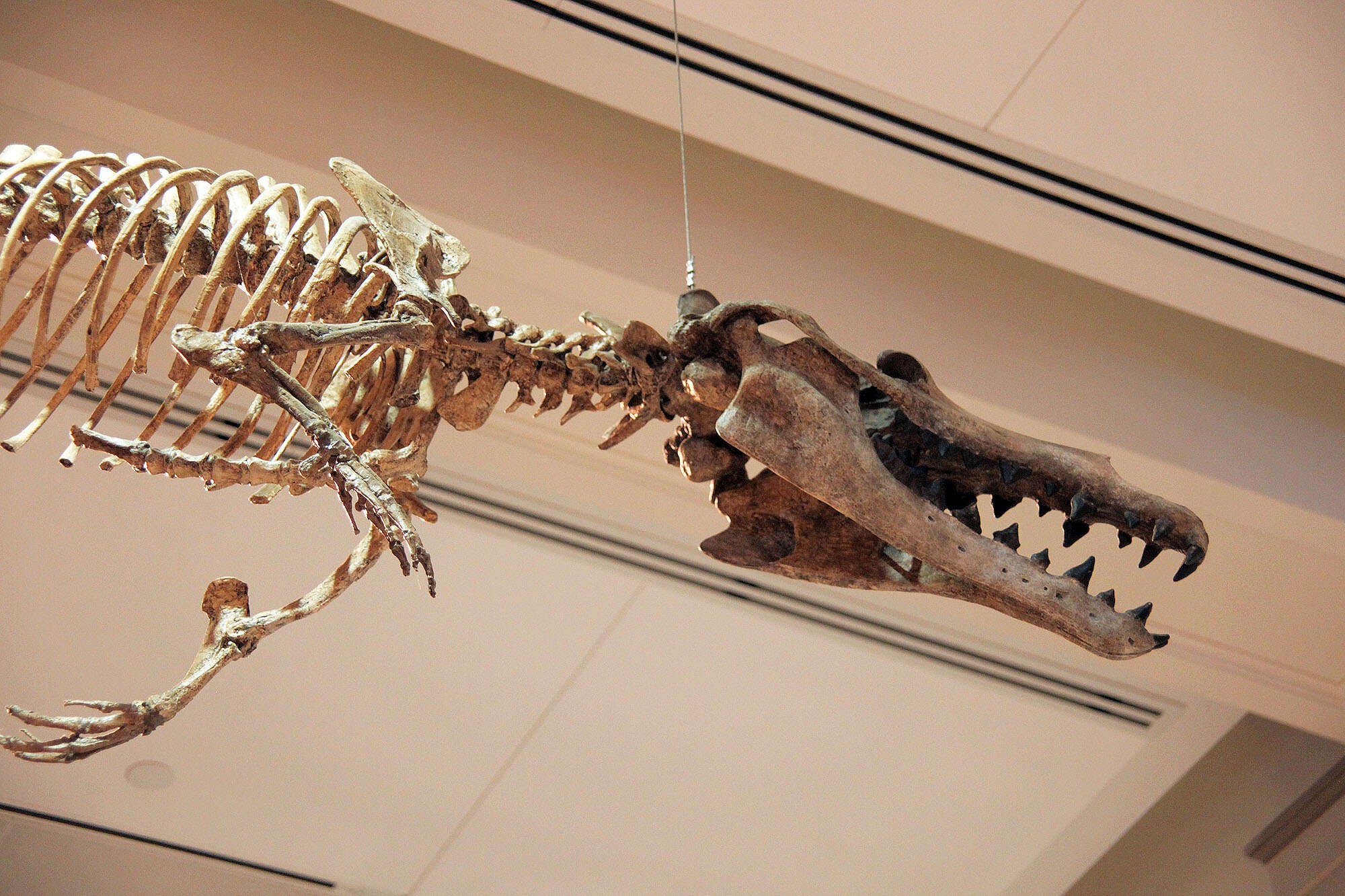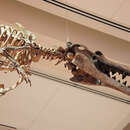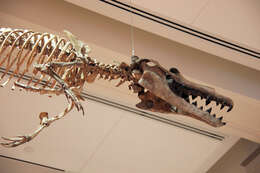
View from the side and below of the skull, rib cage, and forelimbs a maiacetus inuus in the Sant Hall of Oceans in the Smithsonian Museum of Natural History in Washington, D.C. Maiacetus means "mother whale," and Inuus was a Roman god of fertility god. The first skeleton of this ancient whale-like animal was found in Pakistan in 2009, and was a pregnant female with an unborn calf (hence the name).Maiacetus inuus is an "archeocete," which means "ancient whale." It wasn't really a whale, but rather an ancestor of whales which lived both on land and in the ocean (although it lived primarily in the latter). It had bit, sharp, long teeth and ate fish. Maiacetus probably came out of the sea only to rest, mate, and give birth. Its four legs were adapted for foot-powered swimming. The legs could support the maiacetus on land, but they probably couldn't travel very fast or very far inland.This ancient whale-like animal was about 8.5 feet (2.6 m) in length and weighed about 620 to 860 pounds (280 to 390 kg). It lived about 49 to 40 million years ago. The fingers of each foot were elongated, and probably webbed. The hind feet were much larger than the forefeet, which shows how already the limbs were beginning to atrophy and turn into a fluke. The snout was highly elongated as well, good for snapping at fish.The position of the fetus (head-first) suggests that these whales gave birth on land. (Land mammals almost all give birth head-first. Whales give birth tail-first.) The fetus has fully developed teeth, which indicates it was able to fend for itself immediately after birth.A male maiacetus inuus has also been unearthed, and it is about 20 percent larger than the female. This is not much at all, which indicates that males didn't control territories or command harems.


